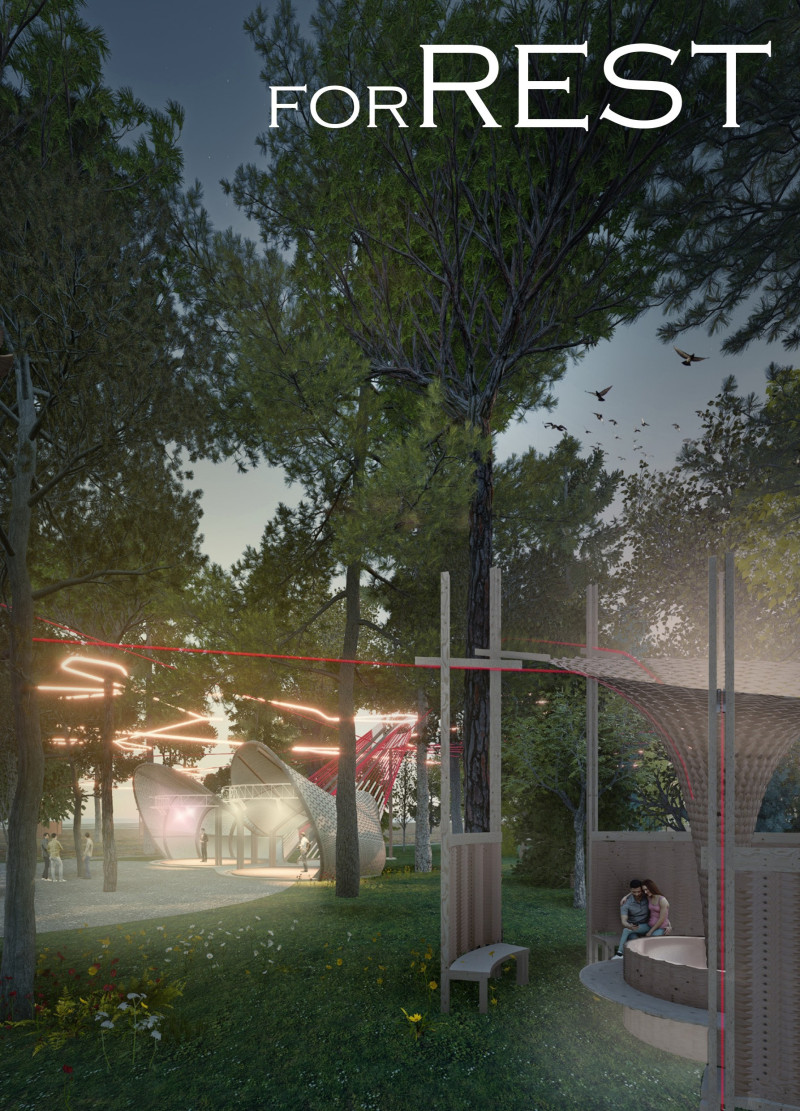5 key facts about this project
At first glance, the project reveals a harmonious relationship between its various elements, showcasing a well-considered approach to massing and form. The façade is characterized by a combination of natural materials such as local stone and timber, which not only resonate with the surrounding context but also contribute to the sustainability goals of the design. The use of large windows and strategically placed openings enhances natural light penetration, creating inviting spaces while improving energy efficiency. The integration of green roofs and landscaping further reinforces the commitment to sustainability, promoting biodiversity and reducing the urban heat island effect.
The architectural design embraces a modular approach, with flexibility at its core. This enables the space to accommodate a myriad of community functions, from social gatherings to educational events. Moreover, the arrangement of spaces allows for easy navigation, fostering a sense of community and encouraging interaction. The interior layout is structured around open-plan spaces that can be reconfigured according to the needs of its users, demonstrating an understanding of contemporary living and working conditions.
Unique to this project is the incorporation of local art and craftsmanship into both the interior and exterior design elements. This not only enriches the cultural narrative of the building but also supports local artisans, creating a sense of belonging among residents. The interplay of textures and finishes—ranging from polished concrete to warm wood accents—adds depth to the overall aesthetic and enhances user experience.
From an architectural perspective, this project places significant emphasis on connectivity and accessibility. Careful consideration has been given to the placement of entrances and pathways, ensuring that all users, including those with disabilities, can navigate the space effortlessly. This reflects a broader trend in architectural design that prioritizes inclusivity and community engagement.
The incorporation of sustainable technologies is another noteworthy aspect of the project. Solar panels discreetly positioned on the roof and rainwater harvesting systems underscore the building’s commitment to environmental stewardship. These features not only reduce operational costs but also promote awareness of sustainable practices among users.
While examining the details of this design, one cannot overlook the subtle yet impactful landscaping that surrounds the building. Native plants and thoughtful green spaces are designed to encourage outdoor activities and interactions, further bridging the gap between the built environment and nature. This creates an appealing atmosphere that invites users to engage with both the architecture and the landscape.
Overall, this architectural project stands as a significant contribution to its urban context, addressing contemporary issues of community, sustainability, and inclusivity. Its design thoughtful integrates numerous elements that enhance functionality while respecting the cultural and ecological nuances of its location. To understand the full scope of this project, including the architectural plans, sections, and various design elements, readers are encouraged to explore the project presentation in greater detail. Doing so will provide deeper insights into the innovative architectural ideas that underpin this thoughtful and well-executed design.


 Alex Atanasov Desov
Alex Atanasov Desov 























